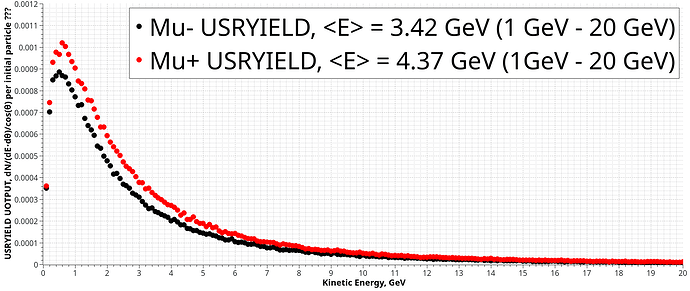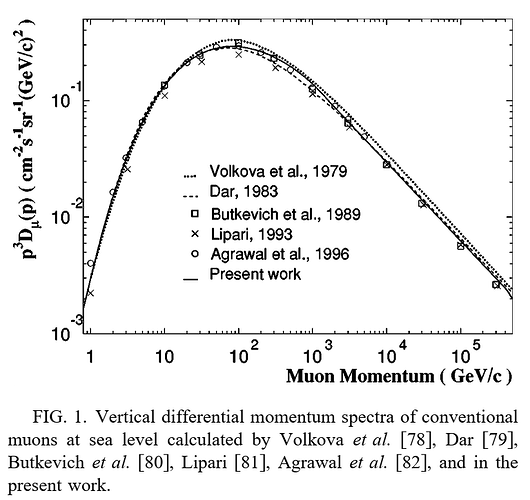Dear Fluka experts,
I’m trying to study the response of NaI(Tl) detector on muon radiation at sea level. As a first step I tried to model muon spectrum at sea level by using built-in cosmic rays source. As an input I used slightly modified files from Fluka CGR example, and files that were generated by ‘atmloc’ program. (all files that I used for this purpose are in ‘Input.zip’ archive that I attached to the message). To score muon flux at sea level I used USRYIELD card and USRBDX card (the resulting files are in ‘Output.zip’ archive). The resulting spectra for Mu+ and Mu- that I received for the USRYIELD card are in the picture. When trying to interpret the result of modelling I’ve faced with some complications. I compared the result of modelling with experimental results provided in several papers (I’ve attached the picture with the result from paper https://doi.org/10.1103/PhysRevD.58.054001 ). The result of modelling does not look like experiment at all. Could you, please, help me understand, if I on the right path:
- As far as I understood from the manual the result of USRYIELD is plain double differential of number of particles per primary: dN/(dE*d0), where E is energy and 0 is an angle. Is it correct to interpret the result as dN/dE integrated over given interval for the angle 0?
- Is it correct to interpret the result of USRYIELD modelling for my case as muon spectrum at sea level that can be further used as input spectrum to determine the detector response? Or should I make some processing for the modelling spectra in order to transform it to true muon spectra at sea level?
- Can I interpret the result of modelling as vertical component of muon flux averaged over given angle interval?
Thank you in advance,
Alexy
Input.zip (19.7 KB)
Output.zip (315.0 KB)



